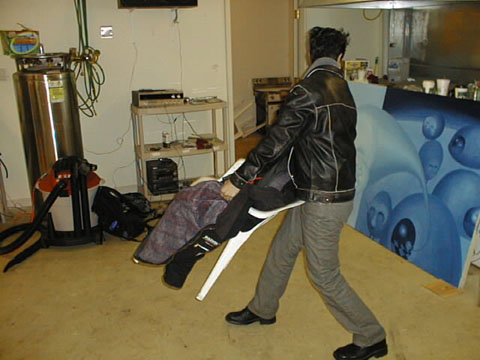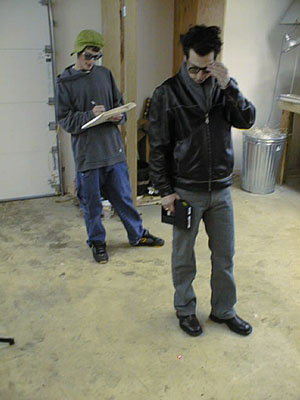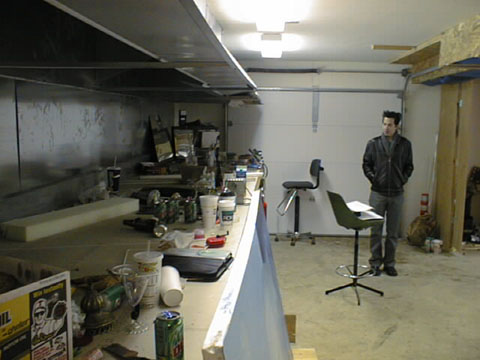



The initial thermostat setting as well as "zeroed pressure gauge" (quotes facilities manager) marked the original state of the "cold-run."
Raytek guns were then used to document all stages of our study, and seemed to be the most efficient (and least hazardly) way to record the data.
After all initial temperatures were recorded, we were ready to power up the flooring system by way of setting the thermostat to our second control temperature, then turning the pressure knobs completely clockwise on the distribution unit. We would estimate a documentation of time in ten minute increments . . .


We returned to the site three days later to observe and check to see if our final results had varied from our last record; luckily, they remained the same. In the end, our experiment would start at 6:30 pm and run until 2:30 am, whereupon the glass artists were still producing their art at a tireless speed.